Romania travel guide
Discover RomaniaWhere is Romania? Located in Eastern Europe, Romania is a country that has started to develop its tourism through its beautiful, rural, and traditional villages with natural landscapes, such as Maramureș, which make you feel like stepping back in time. Romania tourism is highlighted by the legend of Dracula with Bran Castle, as well as the stunning medieval fortresses and castles, which are top-rated attractions. Be sure to include them in your itinerary when planning your Romania travel.
Deemed Europe's last wilderness, Romania stands out with its unspoiled natural landscapes and villages that transport you back in time, exuding an energetic glow and creativity.
Travelling to a new country can be intimidating, especially if you know little about it. But fear not; our Romania travel guide will guide you through all the essential information you need to know before booking your trip and visiting Romania—from weather and currency to famous landmarks, along with other travel tips and practical information.
Romania's tourism began to grow as the country invested more in tourism activities, hospitality, and infrastructure. Tourism in Romania is on the rise, and as a tourist in Romania, you can be sure that your time here will be unique.
Table of contents
A. Common questions before visiting Romania
B. How to get around in Romania?
C. Romania travel tips
D. Why contact a Romania travel agency?
E. Trips and tours in Romania
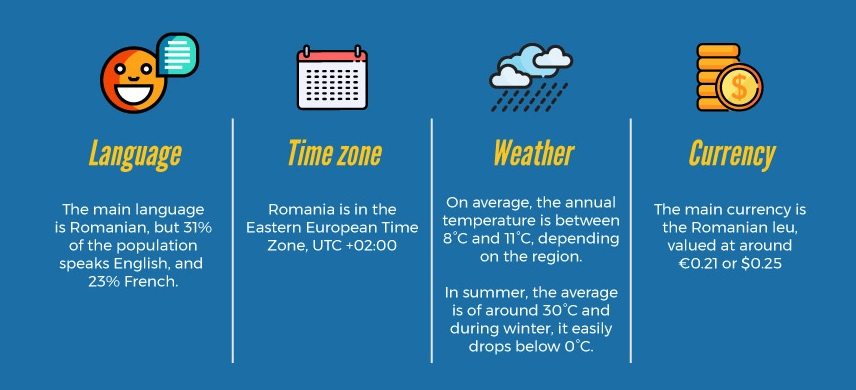
A. Common questions before visiting Romania
Where is Romania?
Romania is an Eastern European Country in the EU (European Union). Finding Romania on the map is quite easy; you just have to look for the most obvious geographical landmarks, such as the Carpathian Mountains, the Black Sea, the Danube River, and the Danube Delta. Often referred to as Dracula's country, if you are eager to travel across Romania, it is not difficult at all to find its location and whereabouts.
What language is spoken in Romania?
Our official language is Romanian; a Romance language evolved from several Latin dialects. According to the Foreign Service Institute, it is one of the easiest languages to learn in the world. But don't worry, because you won't have a hard time getting along with Romanians. Most of the young population speaks English (around 31% of the total population). While the older generations might not understand much in English, many of them are French-speaking (23% of the population).
For those planning a trip, our Romania travel guide includes essential Romanian phrases to help you get by. Romania tourism is thriving, and knowing a few phrases can enhance your travel experience.
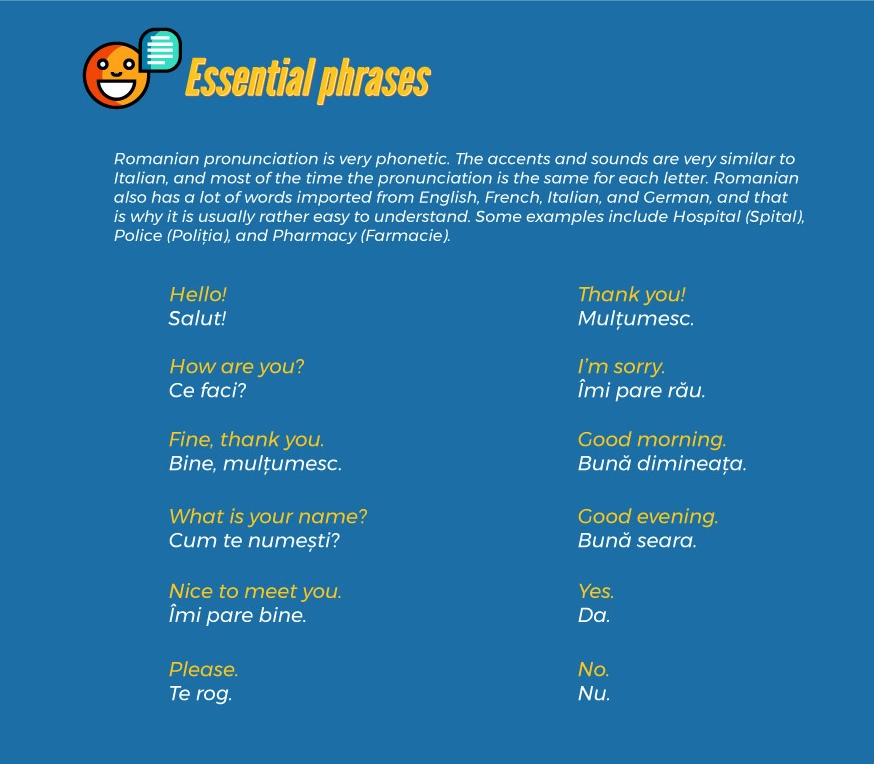
Romanian pronunciation is very phonetic. The accents and sounds are very similar to Italian, and most of the time, the pronunciation is the same for each letter. Romanian also has a lot of words imported from English, French, Italian, and German, and that is why it is usually rather easy to understand. Some examples include Hospital (Spital), Police (Poliția), and Pharmacy (Farmacie).
Here are some basic words and phrases that will help you communicate better.
|
EN: Hello! |
EN: Nice to meet you. |
EN: I'm sorry. |
|
EN: How are you? |
EN: Please. |
EN: Good evening. |
|
EN: Fine, thank you. |
EN: Thank you! |
EN: Yes. |
|
EN: What is your name? |
EN: I'm sorry. |
EN: No. |
Do I need a visa to travel to Romania if I am not an EU citizen?
For those planning a Romania travel, it's important to know that Americans, Canadians, and citizens of Australia, New Zealand, and most non-EU countries do not need an entry visa for stays shorter than 90 days. If your stay exceeds 90 days, you will need to contact the Romanian Embassy to obtain a visa. Comprehensive details about visa requirements can be found here.
For driving in Romania, all European, U.S., and Canadian driver's licenses are valid for up to 90 days from the date of entry.
Romanian tourism is hassle-free as there is no travel tax charged for entering or leaving the country. For more information, please visit GOV.RO.
What is the currency of Romania?
Although Romania is a member of the European Union, the official Romanian currency is the Romanian Leu. The international abbreviation is RON. It is valued at around €0.21 or $0.25. The Romanian currency cannot be bought from abroad. If you want to exchange foreign currency in RON, it is best to find a local exchange office or a bank that displays 0% commission. In general, exchange offices located at the airport or near railway stations are more expensive. For money exchange, we recommend you use exchange offices or banks.
What timezone is Romania in?
Wondering “where is Romania” situated in terms of timezone?
Romania is in the Eastern European Time Zone (UTC+02:00), meaning we are 2 hours ahead of the Coordinated Universal Time. Romania also uses daylight saving time, so during the summer, we are using UTC+03:00.
What's the weather like in Romania?
The weather in Romania can vary a lot, so be mindful of the period in which you are travelling. Summers in Romania are quite hot, with temperatures smoothly going over 35° C, and dropping as low as -20° C during winters. The precipitations are quite modest, with spring being the driest season of all, but with thunderstorms and showers being quite common during the summer.
Romania travel guide tip: During winter, there are usually heavy snowfalls, but most of the time, they start closer to the end of the season.
What is internet access like in Romania?
The Internet is widely available in Romania. Most of the hotels, restaurants, cafes, pubs, shopping centres, and even some stores provide free wi-fi access. You'll only have to ask for the password. According to EU Reporter, Romania has been constantly amongst the best performers in the world when it comes to internet speed, with the average Internet peak connection at 73.6 Mbit/s.
The supply voltage is 220V, 50Hz, and the electricity plugs supported in Romania are CEE 7/4, CEE 7/16, and CEE 7/17.
There are three big providers of mobile communication in Romania: Orange, Vodafone, and Telekom. The smallest price for a prepaid phone card with 5 euro credit is almost 30 lei (€6 – 6.5) from one of those three providers. There are no public telephones in Romania, and the dialling code of the country is +40.
What payment methods can I use?
The most widely used payment method in Romania is cash. But most businesses also accept credit card payments. The main credit cards accepted in Romania are Visa International, EuroCard/MasterCard (EC/MC), Europay International, and America Express.
Romania travel guide tip: If you're looking to use your credit card in rural settlements, you might find it a bit difficult, so we suggest keeping some cash around.
Is Romania expensive for tourists?
"Is Romania expensive for tourists?" This question often arises when planning a Romania travel. While we'd like to say no, we'll let you decide. Here are some typical prices you'll encounter, which should give you a better idea of the travel budget you'll need.
-
A cup of coffee – 8-10 lei (€1.75 – €2.15)
-
A glass of beer – between 4 and 10 lei (€0.9 – €2.15)
-
A glass of wine – 13 lei (€2.8)
-
Pack of cigarettes – 20 lei (€5)
-
1 km for a taxi – between 2 and 2.5 lei (€0.44 – €0.55)
-
Public transportation ticket – between 2 and 5 lei (€0.43 – €1.1)
-
Film ticket – 26 lei (€5.7)
-
A small pizza – 25 lei (€5.5)
-
Dinner at a nice restaurant – around 110 lei (€24)
Tipping in Romania
Tipping is pretty common in Romania, mainly to service workers such as taxi drivers, tour guides, waiters, or hotel staff. Usually, a tip of around 10% is sufficient, but feel free to tip more for excellent service.
At restaurants, the tip is usually not included in the bill.
This is a common concern for those considering Romania travel. Rest assured, Romania ranks among the safest countries globally. However, this doesn't mean you should be careless with your belongings. Whether travelling solo or in a group, it's essential to remain vigilant against pickpockets and beggars, as pickpocketing is prevalent. Additionally, ensure that taxi drivers use the taximeter to avoid overcharging.
While exploring, you may encounter stray dogs, but most are harmless. Still, it's wise to avoid large packs. For further insights into safety in Romania, check out our article, Is Romania safe? In our Romania travel guide.
Because of the low incidence of illnesses and the absence of deadly insects, immunisation is not required when visiting Romania. Nonetheless, we strongly urge that you purchase health or travel insurance prior to your stay. It's always a good idea to be cautious.
Is it safe to drink tap water?
Usually, the tap water is considered safe to drink in Romania. But be careful about the waters found in fountains. You should never drink it without purifying or boiling it first unless assured that it's safe to drink by a guide or the local authority.
What number should I dial in case of an emergency?
If you have an emergency, you can call 112 from any phone, even if you don't have a sim card.
What are the working hours & Public holidays in Romania?
A Romania Travel Guide would not be complete without these details. When planning a trip to Romania, it's essential to know the working hours and public holidays in the country.
Generally, working hours respect the following schedule:
-
Banks: 9 am – 5 pm.
-
Malls: 10 am – 10 pm.
-
Drugstores: 8 am – 9 pm from Monday to Friday. On Saturdays, they are usually open until 4 pm, and most of them are closed on Sundays, but every city has at least one drug store that is open 24/7.
-
Cafes, restaurants, and other eat&drink places: 9 am – 10 pm from Monday to Friday and 11 am – 24 pm during weekends. Some local places stay open until the last client, but the program usually varies depending on the restaurant's policy.
-
Supermarkets: 7 am – 10 pm. There are also several supermarkets with a 24-hour program.
There are a few public holidays when Romanians have the day off, and banks, public offices, and many private businesses are closed. The holidays are:
-
1st and 2nd of January
-
24th January – Union Day
-
1st and 2nd day of Easter
-
May 1st - Labor Day
-
1st and 2nd day of Whitsuntide
-
August 15th – Assumption of the Virgin Mary
-
November 30th – Saint Andrew
-
December 1st - Romania's National Day
-
25th and 26th December - 1st and 2nd day of Christmas
A little bit about Romanian cuisine
If we were to describe Romanian cuisine in one word, that word would be diverse. Many cultures have influenced Romanian food, and somehow it managed to blend all of those tastes beautifully while maintaining its characteristics. Romania shares many foods with the other Balkan Countries and with other countries in Eastern Europe such as Moldova and Ukraine. Romanian tourism thrives in part due to its diverse cuisine, a delicious blend of influences. So, prepare to tantalize your taste buds on your Romanian adventure!
The main meat used in Romanian cuisine is pork. Romanians even have a tradition called Ignat, right before Christmas, when rural families usually slaughter a pig to prepare traditional Christmas foods such as cârnați (sausages), caltaboș, tobă, tochitură (pork stew), piftie, or jumări (pork greaves). And while we're talking about Christmas foods, the best way to serve them is with a small glass of our traditional homemade drink, palinka.
We also have a wide variety of soup dishes, which can be made from meat and vegetables, tripe, or fish, in various combinations. As Lonely Planet mentions, the Romanian food reflects perfectly the agrarian roots and complicated history of the country.
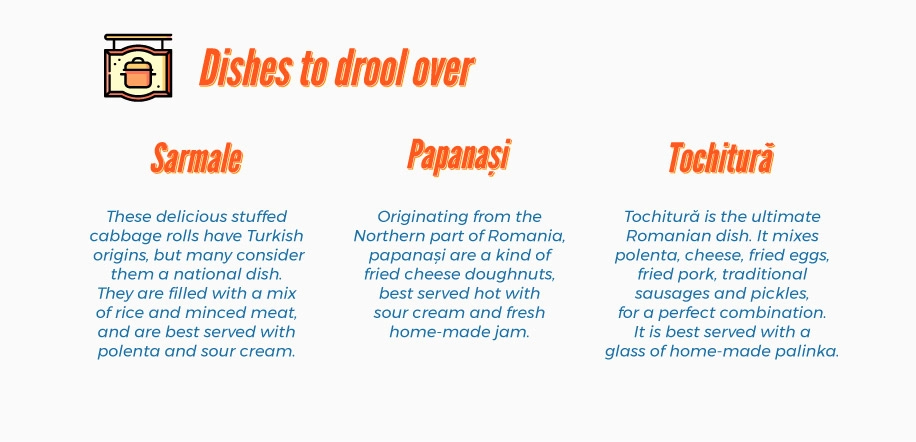
B. How to get around in Romania?
Airports in Romania
There is a total of 16 airports in Romania's cities, out of which the most important are:
-
"Henri Coandă" International Airport, Bucharest - OTP
-
"Avram Iancu" International Airport, Cluj-Napoca - CLJ
-
Iași International Airport, Iași - IAS
-
"Traian Vuia" International Airport, Timișoara - TSR
Bucharest's "Henri Coandă" International Airport, also known as Otopeni Airport, is Romania's most significant and busiest airport. It has 111 international destinations and seven domestic destinations. The airport connects Bucharest to numerous critical European cities, as well as Romania's most important regions.
Public transportation
Public transportation is usually cheap, with tickets costing somewhere between 2 and 5 lei (€0.43 – €1.1).
Taxis & car rentals
Taxis are also available for around 2-2.5 lei/km (€0.44 – €0.55), depending on the city. Car rentals are available in most cities, and prices vary in each location.
C. Romania travel tips
What's the best time to visit Romania?
What are the best places to visit in Romania?
What's the best time to visit Romania?
This is another common question for those considering Romania travel. To be frank, it's challenging to pinpoint the ideal time, as each season offers its unique attractions and drawbacks, catering to diverse holiday preferences. Winter in Romania is enchanting, providing ample opportunities for cultural immersion in its rich traditions, especially during Christmas. Winter sports enthusiasts will find Sinaia an excellent destination with its extensive resorts boasting authorized ski slopes, including the stunning Peleș Castle, a former residence of the Romanian royal family. The Carpathian Mountains offer numerous winter sports options, such as Păștiniș near Sibiu and Poiana Brașov near Brașov, catering to skiing, snowboarding, sleigh rides, and snow tubing.
For those planning Romania tourism during the summer, the pleasant weather opens up a plethora of outdoor activities. Cycling through Transylvania's villages, hiking in the Carpathian Mountains, rafting on the Jiu River, birdwatching in the Danube Delta, and exploring the Black Sea Coast are all popular options. Additionally, summer presents an excellent opportunity to visit Romania's best-preserved traditional villages like Viscri or Breb, fostering interactions with locals and delving into their cultures and traditions. For more insights into the best times to visit Romania and to plan your trip accordingly, further consult our Romania travel guide.
What are the best places to visit in Romania?
Speaking of tourist attractions, while Romania has hundreds of landmarks, there are a few that should be at the top of your Romania travel list. However, we will not discuss specific tourist destinations such as the Painted Monasteries of Bukovina or Transylvania's Villages with Fortified Churches, the wooden churches of Maramures, Corvin Castle, the Vanatori Neamt Natural Park, Romania's National Parks, or the fairy tale mediaeval villages. Instead, we'll focus on the big Romanian cities that are worth seeing because they're the ideal starting point for exploring the aforementioned landmarks.
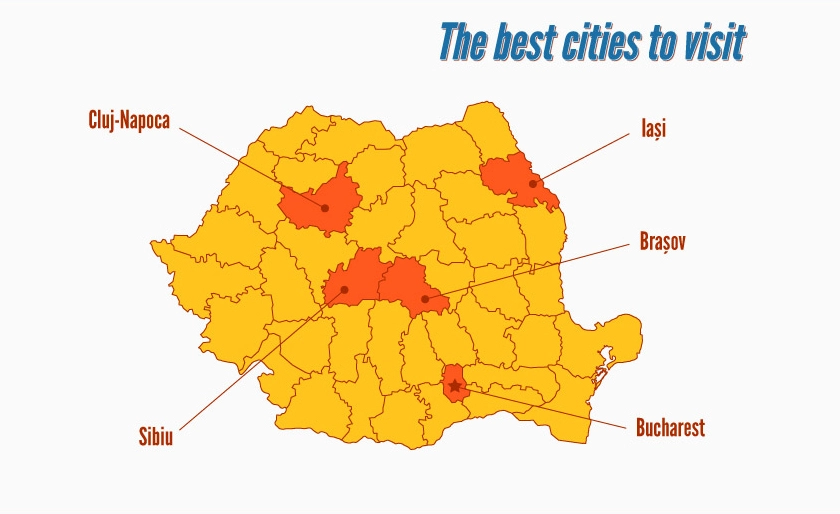
The best cities to visit in Romania:
1. Brașov, Romania
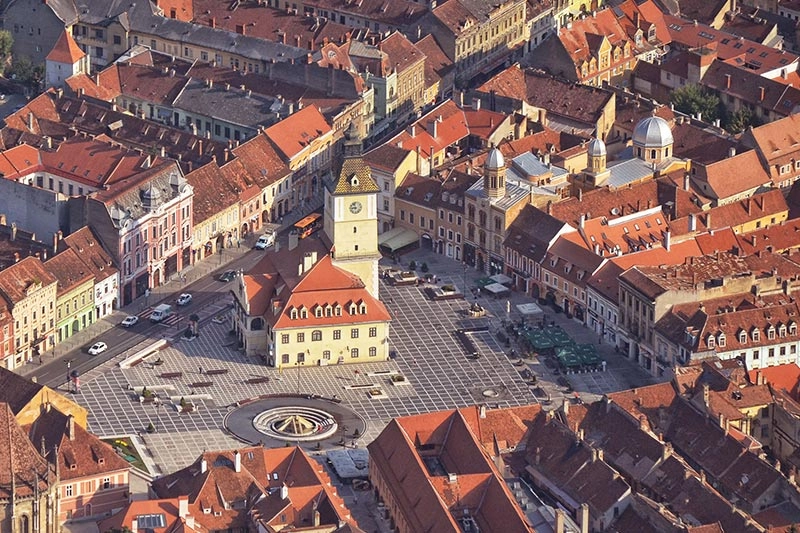
Located in the heart of Romania, at the foothills of the Carpathian Mountains, Brașov is a city that was built in 1211 by the Teutonic Knights. However, the oldest traces of human settlements in the area date back to 9500 BC.
Brasov is located in central Romania, at about 166 Km. from Bucharest. It is well known for being a commercial hub at the trade roads between East and West. Brasov has quite an excellent local transportation network; also, it has a regular bus line for Poiana Brasov. The railway station is also a quite busy link hub, with trains arriving and leaving nationally and internationally.
The cultural mixture and medieval architecture turned Brasov into a beautiful medieval town, impressing every tourist who visits the city. Some of the tourist landmarks that you have to visit in Brasov are the Black Church, The White and the Black Tower, Strada Sforii (Rope Street), and the city centre.
Brasov has more to offer because it is close to various Romanian sites such as Peles Castle in Sinaia, which is 48 kilometres from Brasov, Bran Castle in Bran Village, which is 25 km from Brasov, and Rasnov Fortress, which is around 20 km from Brasov.
Some of the top attractions of the city are the Black Church, the city's main square (also known as Council Square), the Rope Street - one of the narrowest streets in Europe, The Black Tower, The White Tower, Cetățuia Brașovului. A tour of Bran Castle will help you discover all the details of Dracula's legend, Vlad the Impaler, as well as the connection between the castle and Bram Stoker's Count Dracula. From Brașov, you can also take a trip to the Bear Sanctuary in Zărnești, a natural reservation where you can adopt a bear.
The city also has numerous gastronomic places that you can choose from. You can taste some local cuisine at restaurants recommended in our Romania Travel Guide, such as La Ceaun and Restaurant Sergiana, or enjoy modern Mediterranean, Italian, and European cuisine at Dei Frati, Prato, and Trattorian Artisan Food.

Bucharest, the capital city of Romania and by far the biggest city in the country, is an exceptional tourist destination encompassing monumental buildings of communist architecture, national museums and squares, and parks. The capital city, also known as "Little Paris," is by far the centre of Romanian culture and art. Bucharest succeeds in combining the architectural style of the Interbellum and communist periods with elements of modern architecture, and one of the best ways to observe all of these is by taking a walking tour through Bucharest's Old Town.
Other famous attractions in Bucharest are the Palace of the Parliament (also known as People's Palace) and the Spring Palace, the former residence of Romania's communist leader, Nicolae Ceaușescu. In the times before WWII, the earthquake from 1977 and the communist regime took down most of the city's Art-Nouveau-style architecture and buildings.
If you want to explore Romania's capital Bucharest check out our Bucharest City Tour, and if you would like to learn more about the Romanian Communist period, check out our Bucharest Communist Tour.
For tours in Romania, Bucharest is oftentimes looked at as the best starting point, as for Henri Coanda International Airport (the busiest airport in Romania as per passenger traffic). The city also has the largest public transport system in Romania. It also has very good national and international railway connections.
3. Cluj-Napoca, Romania
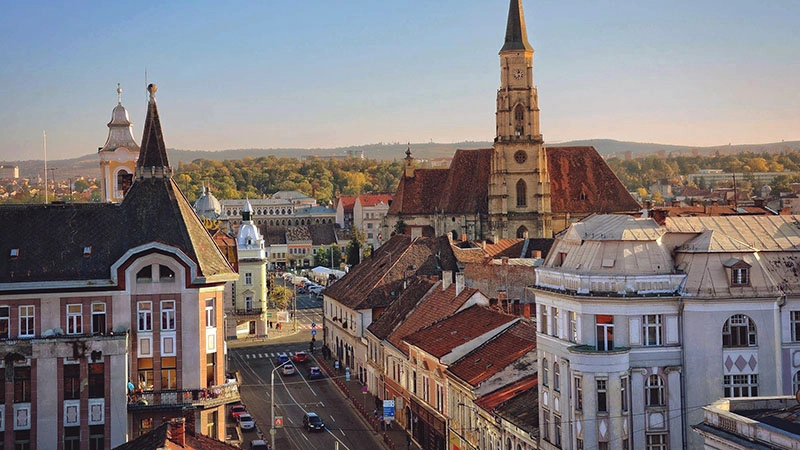
Cluj Napoca is the heart of Transylvania and a perfect place to start your journey, the place is considered by Lonely Planet Travel Advisory as one of the best places to keep a safe distance after the pandemic. The main landmarks of the city are the Cluj-Napoca Botanical Garden, Visit St. Michael's Church, Central Park, and the Old Town Hall. Cluj has more to offer other than the cultural heritage and landscapes. Being one of the largest student cities in Romania, Cluj is filled with unique cafes and pubs, and it is a popular location for music festivals such as the UNTOLD Festival.
If you find yourself in Cluj Napoca, make sure to take a walking tour around Union Square and the Botanical Garden, and take some photos on Mirror Street. Also, don't even think about skipping a trip to Turda Salt Mine, one of the best underground theme parks in Europe, or to the stunning Alba Carolina Fortress.
If you plan to start your trip to Romania from Cluj, just check if Cluj-Napoca International Airport has your nearest airport on the list. To get to Bucharest from Cluj by car, the best option would be to the roads E60 or E81.
4. Iași, Romania
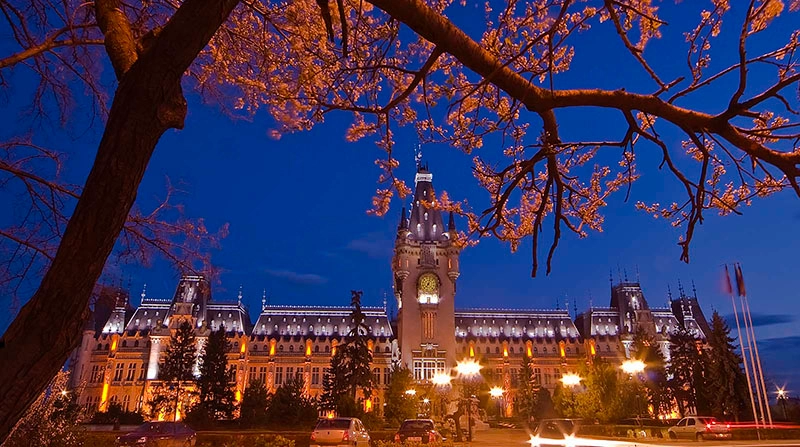
Iași, the city of romance, is a must-visit destination for those interested in a Romania travel destination. Located in the historical region of Moldavia in northeastern Romania, Iași is renowned for its romantic parks and vibrant cultural scene. A key highlight of Iași tourism is the Palace of Culture, also known as the Moldova National Museum Complex, which houses the Art Museum, Moldavia's History Museum, the Ethnographic Museum of Moldavia, and the Science and Technology Museum. Home to the oldest Romanian university, Alexandru Ioan Cuza University, and the first engineering school, Gheorghe Asachi Technical University, Iași holds a significant place in Romania's educational landscape.
Iasi is one of the major cities in Romania. The city also has been the capital city of the United Principalities of Moldavia and Wallachia from 1859 to 1862, and the capital city of Romania from 1916 to 1918.
The city is home to the oldest national theatre and one of the most prestigious theatrical institutions in Romania, the "Vasile Alecsandri" National Theatre. Around Iași, you can take a trip to the Bucium Relay Platform, a spot that offers a great view of the city, and you can visit several recreational parks such as Ciric or Hamak. For any tourist info, you can easily reach the Tourist Information Centre in Iasi, which is located across Piata Unirii (Unirii Square Iasi) or book ahead one of our Iasi city tours or tours from Iasi.
Being one of the main cities of Moldavia, Iasi is oftentimes used as a departure city for tours to the numerous historical sites in this region. You can depart from Iasi to locations such as the Painted Monasteries of Bukovina, which are a UNESCO World Heritage Site, the Marginea Black Pottery Workshop, or the Neamt Citadel.
5. Sibiu, Romania
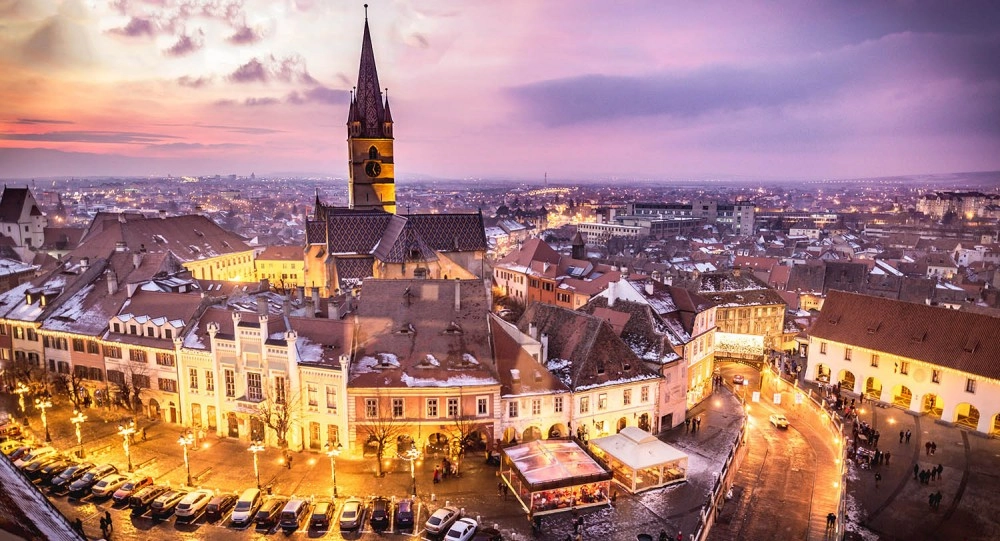
The city of Sibiu, Romania, with its very well-preserved medieval town, was featured in Forbes's "Europe's Most Idyllic Places To Live" article. The city acquired the title of the European Region of Gastronomy in 2019 and hosted a food culture festival in September 2019. Other notable events that Sibiu hosts are the Christmas market and the Astra Film Festival. While in Sibiu, you should visit the Brukenthal Avrig Palace and the ASTRA Museum, and walk around the city on its stone-paved streets. The city is divided into the Upper Town and the Lower Town, connected through the Passage of Steps. In the past, the Upper Town was the rich centre of the town, while Tower Town was inhabited by the middle classes.
One of the most important cultural centres in Romania, Sibiu, was designated the European Capital of Culture in 2007, along with Luxembourg. Located in the vicinity of Brașov, Sibiu is defined by its aristocratic elegance and its abundant cultural life.
Walking through the city centre reveals several beautiful landmarks such as the Bridge of Lies and the Brukenthal Museum, and we guarantee you will be impressed by the unique rooftops of the city.
From Sibiu, you can easily reach Sinaia, where you can visit Peles Castle. Sibiu is also close to the Păltiniș ski resort and to the ASTRA National Museum Complex, where you can see what the life of the Romanian peasants looked like.
D. Why contact a Romania Travel Agency?
Travelling solo or in a group, the best way to experience Romania while receiving the most useful information about the places that you visit is with professional guidance. Romanian people are very warm and welcoming towards tourists, and most of the people in urban areas can understand and speak English. Therefore, if you plan your Romania trip, you should be able to go around just fine. Even if you travel accompanied or on your own, if you want to explore the other tourist attractions outside the cities, do it carefully as you can easily get lost. Unfortunately, getting anywhere close to the hidden gems of Romania is not always possible by using public transport.
To avoid getting lost in the countryside, get in touch with a local travel agency before travelling to Romania. The best travel itineraries are realized through brainstorming, research, and site inspections that the travel agencies do all the time. Having your vacation planned through an experienced travel agency is recommended as they have all the information for your trip and other useful info, such as travel gear that you may need to access a particular area. Therefore, you should benefit from the network, experience, and knowledge of a DMC (Destination Management Company) or tour operator to have the best experience in Romania.
In this Romania Travel Guide, we have summarised seven steps to help you plan your Romanian vacation:
1. Choose your travel agency carefully
Visiting for the first time a new country can be overwhelming, and with so many things to see and do, selecting can be a bit of a pain. There is no doubt that the right travel agency will ease your planning and will offer you the best tips ever. But if you still prefer to plan everything by yourself, keep in mind that having contact with the right agency might be useful in some unexpected situations.
2. Traveling alone or in a group?
Travelling alone in Romania will be something to remember, and for sure, you will return home with a new list of friends. Travelling in a group or with a family has the great advantage of being less expensive. Still, you should pay extra attention to choosing the accommodation units or planning the itinerary so that everybody can be pleased.
3. Select a theme for your holiday
It's easier to plan each day of the trip if you set priorities in your mind. For example, if you are attracted to Dracula's myth, you should choose the Transylvania region and allocate at least two days to visit it. The personality of Vlad Tepes, the son of Vlad Dracul, is related to a few places, including Transylvania and Wallachia.
4. Rent a car vs. coach
Travelling by coach is by far the most stress-free way of visiting as the route is already established, and the guide will tell you everything you want to find out. But renting a car or a minivan, depending on group size, can be more fun and exciting.
5. Make a top 5 things you want to see and do
It will be a pity to return home and realize that you didn't see a particular place just because you accidentally missed it or forgot it. So, the best thing to do is to make a list and stick to it. Also, on a separate list, note the things you would like to experience in Romania. Our suggestions include tasting sarmale, drinking palinka, painting an egg, and dancing the hora.
6. Choose what kind of accommodation you prefer most
Romanian hotels and guesthouses are ranked according to European laws, which are, in general, respected. In accordance with your budget, you can also get accommodation in hostels or camping sites, but you should not miss the chance of at least one night in a rural guesthouse. Romanian rural hospitality is famous worldwide, and what can be better than trying traditional food directly from the source?
7. All-inclusive or not?
All-inclusive is recommended if you are staying several days in the same accommodation unit, if not, resume to breakfast. You should know that meals are in general richer at the guesthouses, and most of the time palinka is on the house.
Now you're set up to plan your Romanian vacation!
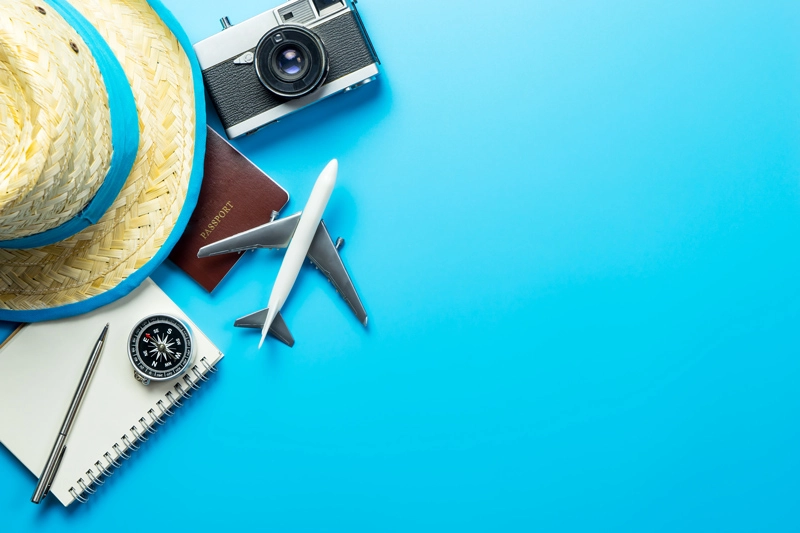
E. Trips and tours in Romania
To make your Romania travel experience as memorable as possible, we leverage our extensive experience and deep knowledge to craft the most exciting, informative, and enjoyable itineraries. Whether you are exploring vibrant cities, picturesque villages, or breathtaking natural landscapes, our carefully planned itineraries ensure that every moment of your journey is filled with discovery and adventure.
Starting from Bucharest
Our Bucharest Travel Agency prepares amazing tours to exceed all your expectations. Through our agency and with our travel guides, you will receive the best experience in and outside Bucharest. Our Bucharest City Tour includes the Palace of the Parliament and all the best landmarks in the capital city. If you prefer to explore and discover more about the communist period in Romania we have this unique Bucharest Communist Tour.
If you don't have much time on your hands, you can choose a day trip from Bucharest. If you're looking to visit some of the most popular places in Romania, you should check out our day trip to Bran Castle, which also includes the Peles Castle and a visit to the medieval city of Brasov. You may also decide on a Transfagarasan road trip, which will take you to the Vidraru Dam and Balea Lake, or a trip to Zarnesti Bear Sanctuary to see the bears and then go to visit Bran Castle.
For a full-round experience in Romania, you may also choose a guaranteed departure from Bucharest for the Classic Tour of Romania. This gives you the possibility to visit all its major landmarks, famous castles, historical sights, and all the sightseeing tours that you need to discover this beautiful country. You will get to visit beautiful cultural landmarks such as Bran Village and Bran Castle, the Alba Carolina Fortress from Alba Iulia, the medieval city of Sibiu, and the well-preserved villages of Maramures standing on the rolling hills.
We have prepared something even for those who are interested in Romania as Dracula's country. If you want to explore the legend of Count Dracula with all the related landmarks and locations that were an inspiration for the vampire legends, we have prepared this eight-day Dracula Tour.
For those coming on a river cruising along the Danube River, we can prepare custom tours according to their time and preferences.
Starting from Cluj Napoca
As a Cluj Travel Agency, we have prepared a complete Cluj City Tour for every traveller interested in exploring the city. Cluj has an excellent geographical positioning for trips to everyone who wants to start their trip to Transylvania. Cluj Airport has quite good connections, so make sure to check if you have a direct flight to Cluj. From there, our destination guide can take you on the beaten path of Transylvania villages spread on the Carpathian Mountains or on a trip along the most beautiful road in the world: the Transfagarsan Road.
Unleash the magic of Romania Tourism!
Romania awaits with open arms, promising a journey filled with captivating history, stunning scenery, and mouthwatering cuisine. This Romania travel guide equips you with the knowledge to craft the perfect escape. Dive into medieval towns, trek through majestic mountains, and savour delectable dishes. Are you ready to discover the magic of Romania?
Contact Rolandia for a personalized Romanian travel consultation. Our experts will craft the perfect itinerary to turn your Romanian dreams into unforgettable memories.